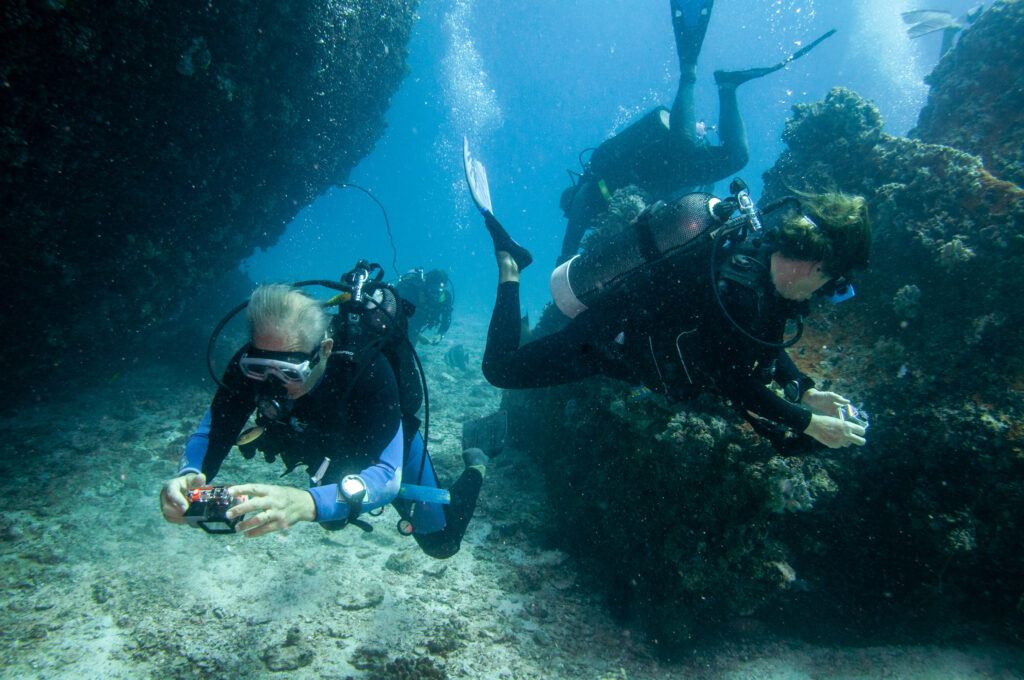What is it to Thumb the Dive?

What is it to Thumb the Dive? “Thumb the Dive” is a scuba diving term that signifies the need to terminate a dive at a point or time other than the initially planned turning point. Divers may use this signal in a variety of situations, most commonly when a diver encounters unexpected or dangerous circumstances […]
What is Technical Diving?

Technical Diving, also known as Tec Diving, represents a discipline within the broader field of underwater exploration that pushes beyond the standard boundaries set for recreational scuba diving. This form of diving is characterized by its higher levels of complexity and risk, due to the increased depths reached, the use of multiple breathing gases, and the navigation of overhead environments, such as shipwrecks and caves.
What is the measurement Feet of Sea Water?

What is the measurement Feet of Sea Water? Feet of Sea Water (FSW) is a crucial concept for scuba divers to understand in order to safely navigate the underwater environment. As a unit of the Imperial system, FSW is used to measure pressure experienced under water, with 1 FSW representing the pressure in 1 foot […]
What is Nitrogen?

What is Nitrogen? Nitrogen is an inert gas, meaning it does not readily participate in chemical reactions. It constitutes approximately 78% of the Earth’s atmosphere, with the remaining 22% made up of oxygen, trace gases, and water vapor. While nitrogen is essential for various biological processes and is harmless when inhaled at normal atmospheric pressure, […]
What is Isobaric Counterdiffusion?

What is Isobaric Counterdiffusion (ICD)? Isobaric counterdiffusion (ICD) is a critical physiological process that occurs during scuba diving, particularly in technical diving scenarios involving the use of mixed gases. The phenomenon involves the diffusion of gases in and out of a diver’s tissues in response to changes in the composition of the breathing gas, while […]
What is Task Loading?

What is Task Loading? Task loading in scuba diving refers to the cumulative effect of multiple responsibilities or tasks that a diver must manage simultaneously. The concept is rooted in human factors psychology and is crucial to understanding and enhancing diver safety. When task loading becomes excessive, the risk of errors or omissions increases, potentially […]
What is a Surface Marker Buoy?

What is a Surface Marker Buoy? A Surface Marker Buoy (SMB), also known as a safety sausage or dive sausage, is a critical safety device used by scuba divers to indicate their location to people at the surface. Their usage is widespread in recreational and professional diving, as they provide an essential visual reference for […]
What are the Bends?

Bends, also known as decompression sickness (DCS) or being bent, is a potentially serious condition that may affect scuba divers who ascend to the surface too rapidly or fail to follow proper decompression procedures. This article explores the symptoms, causes, prevention, and treatment of the bends, providing divers with essential knowledge to reduce the risk of DCS and maintain safe diving practices.
What is Ascent when Diving?

Ascent refers to the upward movement a diver makes as they transition from being submerged underwater to reaching the surface. This process is an essential phase in scuba diving, directly impacting the safety and health of the diver. Ascent is not necessarily a straightforward or continuous journey from depth to the surface; it may require planned pauses, known as decompression stops, to help the body adjust to pressure changes and avoid decompression sickness, a condition commonly called “the bends.” In scuba diving, a controlled and deliberate ascent is crucial to maintaining well-being, preventing injuries, and ensuring a safe return to the surface. This article will explore the importance of ascent, its stages, best practices, and the potential risks divers face during this critical part of the dive.
What are Analog Instruments?

What are Analog Instruments? Analog instruments have played a crucial role in the development and practice of scuba diving since its inception. These devices employ a needle that moves around a dial to provide information, such as depth, pressure, time, and direction. As the world becomes increasingly digital, analog instruments continue to maintain their significance […]
